
A shorter version of the following article was first published in an issue of DigBoston when Between the Lines played repertory theaters in 2019. As a shabby tribute to its late subjects, Raphael D. Silver (1930-2013) and Joan Micklin Silver (1935-2020), I’ve spent the last couple days extending and revising it to repost here.
Between the Lines (1977), which shot two weeks on location in Boston, passed through the Midwest first. Midwest Films, that is: the company operated by the wife-and-husband team of writer/director/producers Joan Micklin and Raphael Silver.
Born in Omaha in 1935, Joan went to Sarah Lawrence, then married Raphael (“Ray”), then moved to Cleveland (his hometown), and then had three children—all before the age of 30. But then when she was a few years past 30, in 1967, the increasing success of Raphael’s construction and real estate businesses led their whole family to New York City, where Joan studied films in the MoMA basement and eventually worked her business connections to break into that industry’s bottom rungs—first by writing screenplays for short films to be distributed in the educational sector, and then by writing scripts for studios, and then by going back to the educational sector to learn how to direct herself.
What followed after that last job was a set of circumstances all too familiar to filmmakers who also happen to be women: Despite having both honed and proven her craft on multiple completed projects, Joan was unable to sell either studios or independent financiers on the prospects of her feature debut, Hester Street (1975), a romantic drama that revolves around four Jewish immigrants in the Lower East Side circa 1896. Undeterred by such rejection, the Silvers financed the film on their own, with Raphael the first-time producer raising a budget in the neighborhood of $350,000 (most of which probably got pulled from him and Joan’s rather considerable joint income). And it was by this process that they officially founded Midwest Films—based out of the same Manhattan office space where Raphael headquartered his other businesses, namely Midwest Land Development.
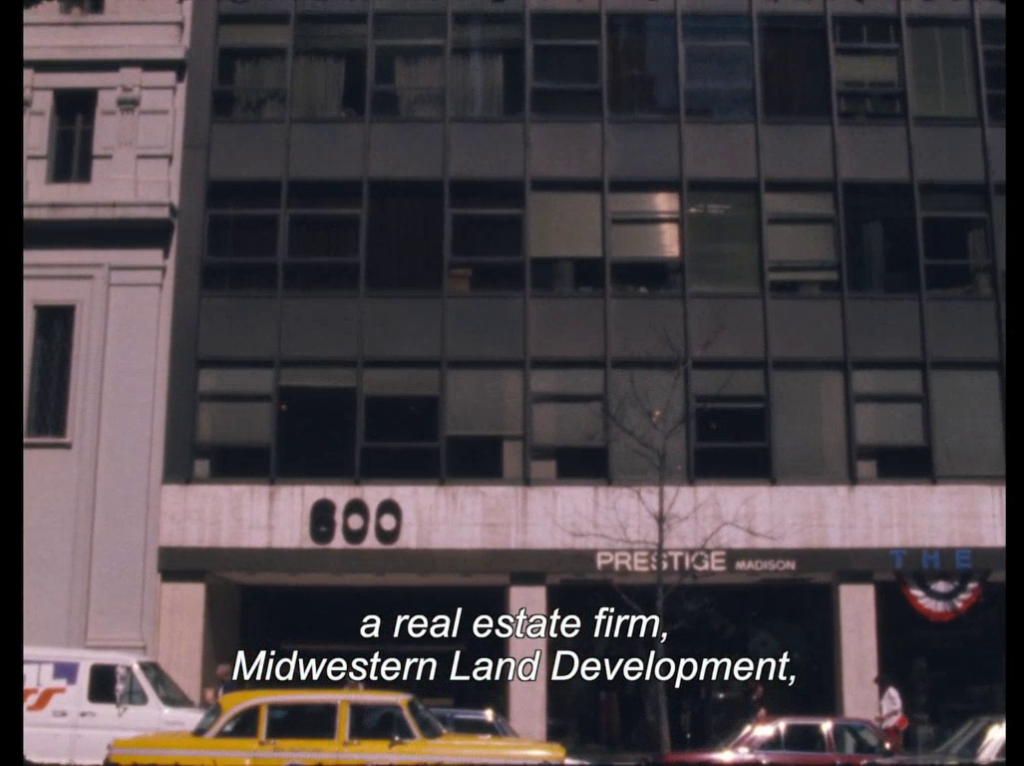
Yet when it came time to distribute the completed Hester Street, the Silvers were spurned by the established players in the game once again. Although not because the completed film was amateurish, on the contrary: A rare period-set entry in the 70s-era women divorcing their cad husbands subgenre, Hester Street is a very professionally-crafted picture; and features thoughtfully withheld lead performances by the great Steven Keats and the great Carol Kane; and on a narrative level ends up even more tidily-resolved and market-ready than its antiquated source may suggest (Joan had written the screenplay from a late 19th-century novella herself, the first of many adaptations—she’d later write from Hans Christian Anderson and F. Scott Fitzgerald, among others).
Instead, distributors were turning Hester Street down because they just didn’t see a path to profitability: usually explaining that it was because the film was in black-and-white, and subtitled, and of course too ethnic.
So like countless others before them, Joan and Raphael called upon one of the American cinema’s guardian angels to consider their problem: “Ray called up John Cassavetes cold,” Joan explained to Filmmaker Magazine in 2014. “Cassavetes was so nice. [Ray] told him the problem, and Cassavetes said, Well, why don’t you distribute it? … I’ve got two guys that are working with me, I’m done with them, they just finished a project. If you want to, meet with them and they can help you. One of them was Jeff Lipsky, and Ray and Jeff—I’m sorry, I’ve forgotten this other guy’s name—distributed the film.” [The other guy was Blaine Novak.]
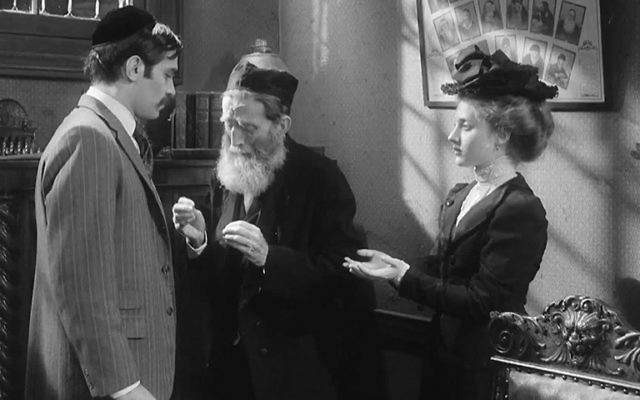
As distributed by Midwest Film Productions, Inc., Hester Street drew over $5 million in grosses on a total budget well under $400,000. And that success allowed for Joan to make a second feature, Between the Lines, which today holds up not only as a beloved townie-journalist classic but also as a fairly strong film, period—and one made under very unique circumstances.
An ensemble-based romantic comedy about the staff of a fictional Boston-area weekly newspaper, Between the Lines seems to have been devised by screenwriter Fred Barron with both the Phoenix and the Real Paper in mind. And while in an early scene depicting an editorial meeting the picture rightfully makes a laughingstock of a film-critic character for daring to request an expenses-paid trip to cover the Cannes Film Festival… it was in fact exactly that assignment—commissioned by exactly that sort of paper—that got Between the Lines started in the first place. As Joan explained in an interview published in the 1989 book Film Directors on Directing: “[Barron] was doing a roundup on the Cannes Festival for the Real Paper, and Hester Street had played in that particular festival. Six months later when Hester Street opened in Boston, we met up with him again and he happened to mention that he’d written a screenplay.”
That screenplay was of course Between the Lines, which Joan, a former Village Voice contributor herself, quickly selected as the material for her second feature. But despite the fact that the script for Between the Lines was by no means uncommercial, especially by the standards of 1977—and despite the fact that Hester Street had grossed so well to begin with—studios and financiers seem to have rejected Joan on this project just the same as they had on the last one. And so instead Between the Lines was paid for with the cash earned by Hester Street and produced outside the corporate filmmaking apparatus and distributed by the Lipsky/Novak method under the Midwest name once again.
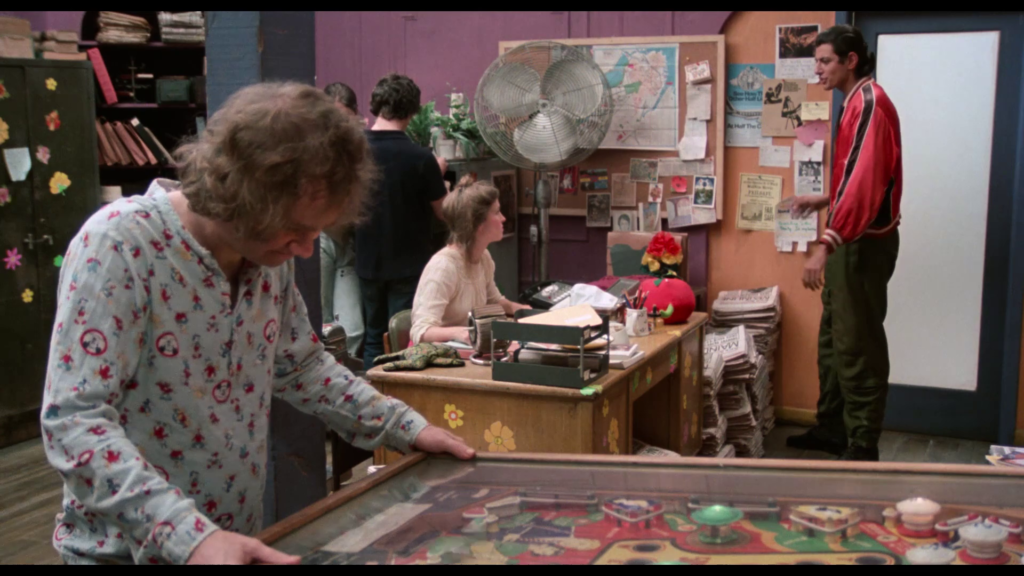
For me Between the Lines is a little too sketchy to love, and suffers from a lack of narrative focus that Joan’s at this point rather plain compositions can’t fully paint over. But even to a non-convert, it’s still very characteristic of what she was so good at during this early period of her career: because like her comparably solid 1st theatrical feature Hester Street, and her superior 3rd one Chilly Scenes of Winter (1979), and her masterful 4th effort Crossing Delancey (1988), Between the Lines couches milieu-specific real-world textures (in this case the urban cultural scene covered by alt-weeklies) within a traditional genre-based narrative structure (a partner-swapping comedy/drama sort of thing) to create extremely complicated portraits of lovelorn characters in anguish (usually from romantic or sexual quandaries they created for themselves, and now can’t escape).
Also like all those other early movies, it’s got a great ending.
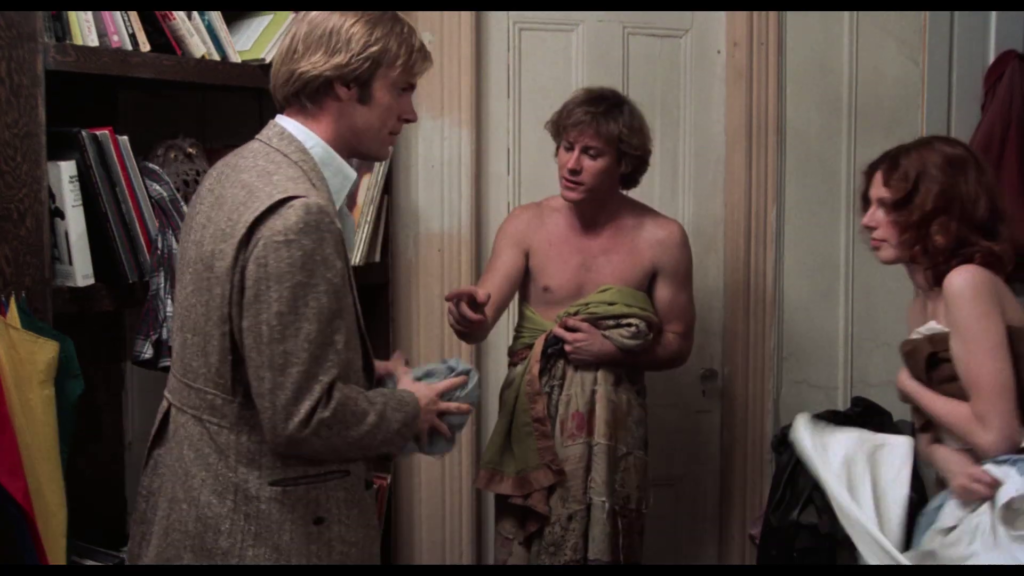
To hear the Silvers tell it, Hester Street had succeeded in part by filling gaps left by underperforming studio pictures. “Most theaters are booked a year ahead with the studio product line—the majors tell them, Film A will be a blockbuster, you’ll get 10 weeks, Film B will give you six weeks, and so on,” Raphael told the Washington Post shortly before the release of Between the Lines. “Then what happens is that the pictures begin to fall out of bed, huge holes inevitably open up… [and] our job was to convince the exhibitors that our film would do more business than those retreads.”
But the film exhibition industry had changed a great deal in the two years that’d passed since Hester Street, with the majors consolidating their control even further. And so it seems the Midwest team had a harder time booking their second film, despite the proven success of the first one.
“Just in that short period of time it [became] much harder to do,” Joan said about self-distribution during an extremely thorough video interview available on the Director’s Guild of America website. “We couldn’t afford the ads in the paper, which was where people were. … And it wasn’t about a theme, like Hester Street, that already had a niche audience, as they say now. It was much harder. … Although it’s a film that I feel very good about and I’m very happy about. … We distributed it, and it, you know, played where it played.”
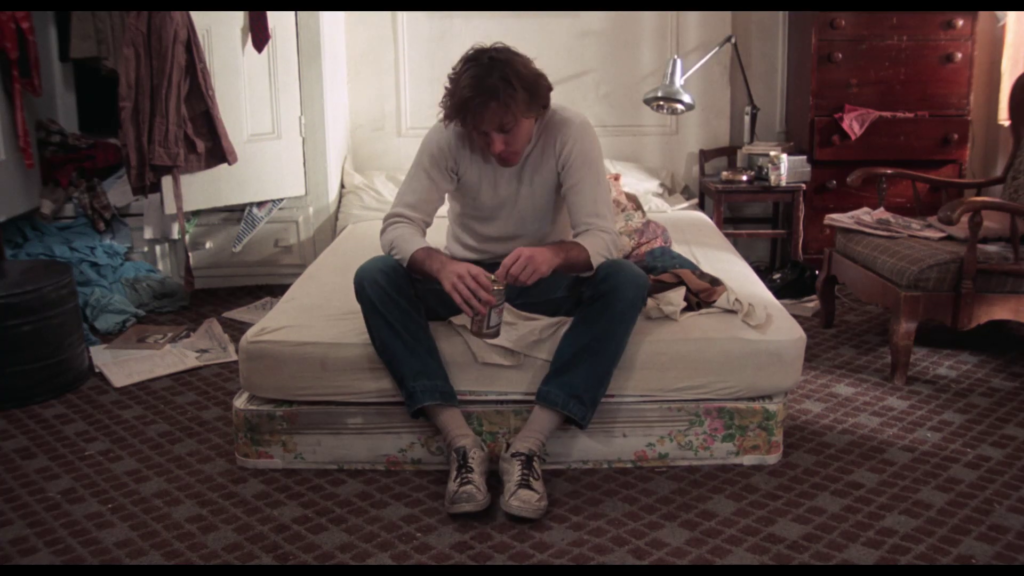
Following that, the Midwest Films name would only appear on the two films that Raphael Silver directed himself, On the Yard (1978) and A Walk on the Moon (1987). I haven’t seen the latter picture, on which Joan seems to have had no official involvement. But I did recently see On the Yard, which Joan produced, and which is adapted from the novel by Malcolm Braly, and which is a nearly-great American movie ready and waiting for rediscovery.
Actually on the basis of On the Yard, it seems that Raphael shared many of Joan’s artistic qualities as director: both establish overarching color schemes for their films, but otherwise compose images plainly—though with a directness that at its best could be described as elegantly simple rather than as simply televisual. And both had a great appreciation for the impulsive gestures and occasionally grave range of the young John Heard, who made his screen debut in Between the Lines, and who plays the lead in Chilly Scenes, and who in On the Yard—an overwhelmingly brown/green/navy/beige prison movie—plays Juleson, who for awhile seems to be the lead character.
But you soon realize that, on the strength of Braly’s screenplay, the film doesn’t really have a lead character—but instead just follows a couple relatively small choices rippling outward until they’ve shaken up the large ensemble’s entire world. Juleson borrows a carton of cigarettes from the prison’s black-market salesman Chilly (Thomas G. Waites), who says outright that it’s “a box I hope I get beat for.” And when Juleson indeed fails to pay up, his tough-guy integrity prevents him from providing Chilly a make-good favor either—so it becomes a macho game of chicken, with both guys misjudging how far the other is willing to go to save face. Yet Silver composes all this from a wise remove that keeps the sensational psychology in the background, and fills up the foreground with an unmatched amount of realistic prison images, scenes, and textures instead—until his film recalls something like Frederick Wiseman’s Basic Training (1971) as much as it does Malcolm Braly, or Eddie Bunker, or even crime fiction in general (here it oughta be noted that On the Yard achieves that nonfiction vibe from having been shot at the correctional facility that’s now known as the SCI Rockview—today even our prisons sound like tech companies—where Silver hired incarcerated peoples and guards alike to play supporting roles and populate the film’s expansive backgrounds).
So of course the carton of cigarettes isn’t the subject itself at the center of the story, but really just the Trojan Horse that gets us inside. And the place that it gets us inside of, then known as the State Correctional Institution at Rockview, Bellefonte, PA, is a place that Silver paints with a great abundance of humane detail—and perhaps even more importantly, a place that he paints from an appropriate distance. Because On the Yard is an ecosystem movie in the truest sense—probably even made with that unofficial subgenre’s godfather Robert Altman in mind. Except where Altman started at a far distance and zoomed in, On the Yard quite purposefully takes the opposite approach: Silver begins with a single guy’s urge for a smoke and then zooms out until we can seem to see all the structures that surround him—literally, physically, and otherwise.
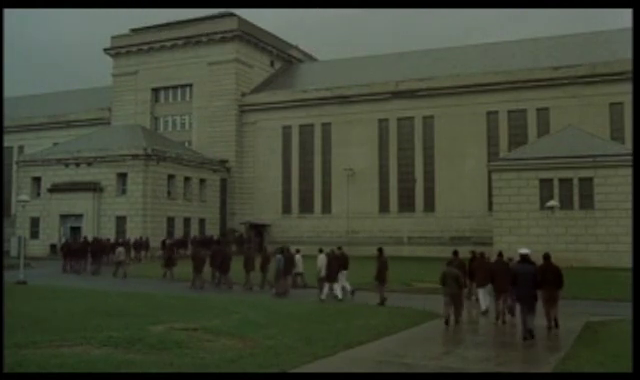
Around the same time, Joan got her long-overdue opportunity to direct a studio movie, an adaptation of Ann Beattie’s 1976 novel Chilly Scenes of Winter. And to close all these overlapping threads, it ended up taking a Boston alt-weekly newspaper to get that movie rediscovered—and even reworked—itself: United Artists had retitled it Head Over Heels for its first release, where, per Joan, they “rushed it out on a double bill with something, and it went blah.”
But just as Joan Micklin Silver had contributed something to the cultural history of Boston’s alternative weekly newspapers, a Boston alternative weekly newspaper managed to contribute something to the oeuvre of Joan Micklin Silver. According to a 1982 report from The New York Times, “a rave by the film critic of The Boston Phoenix prompted a New England exhibitor to open [Head over Heels] in Boston,” and that booking led to more second run bookings, and even to renewed efforts from the film’s principal creatives (“Miss Beattie even wrote new ad copy.”)
Finally, the profit potential suggested by the late Boston run led United Artists Classics, a subsidiary company that’d been having success with other recuts and rereleases around the same time, to rerelease Joan’s film under the original title Chilly Scenes of Winter, and with one major edit made at her request. And that second, slightly shorter version of the film is the one that remains in circulation today, with the Head Over Heels cut pretty much struck from the record.
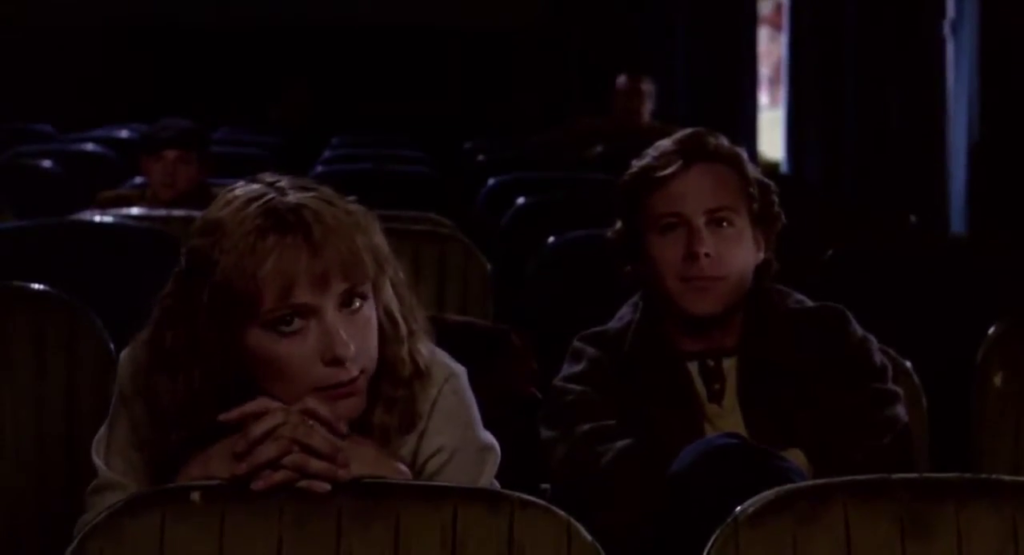
And with regards to the larger Silver oeuvre, its rediscovery continues to date. Last June, it was reported that the Cohen Media Company—which is led by the billionaire Charles S. Cohen, and owns art house theaters across the globe (including the entire Landmark Theaters chain) as well as its own home video distribution company (including attendant restoration facilities) and oversaw the very successful rerelease of Between the Lines in 2019—was shopping around the international distribution rights for three more restored Silver family movies: Hester Street, On the Yard, and A Fish in the Bathtub (1997), a film which I’ve yet to see myself but which represents, along with the presumably still-unrestored A Walk on the Moon, Joan and Raphael’s only return to independent film after their first handful of Midwest films in the 1970s.
I look forward to seeing A Fish in the Bathtub, in part just to see if the Silver touch is still identifiable when removed from the specific aesthetic qualities of the era in which those Midwest movies were made. Because those early Silver features are uncommonly rich examples of the American independent cinema during that period—animated by a pioneering spirit borne out at every stage of the filmmaking, including exhibition itself. Speaking of which…
Hester Street is currently available to stream on a few platforms. A Blu-ray copy of the film released in 2015 remains quite track downable, although it’s now out of print ahead of the Cohen rerelease.
Between the Lines, having already received its Cohen-branded rerelease, is currently available on Blu-ray, DVD, and to stream on most video-on-demand platforms, as well as on the Criterion Channel, where it’s presented alongside the midlength nonfiction film Joan Micklin Silver: Encounters with the New York Director (1983).
On the Yard is not currently available to stream by legal means. A DVD copy of the film released in 2014 remains quite track downable, although it’s probably out of print ahead of the Cohen rerelease.
Chilly Scenes of Winter is not currently available to stream by legal means. A Blu-ray copy of the film released in 2017 remains quite track downable, although it was a limited pressing and therefore out of print as well.
Crossing Delancey is currently available on most video-on-demand platforms and remains in print on DVD.

